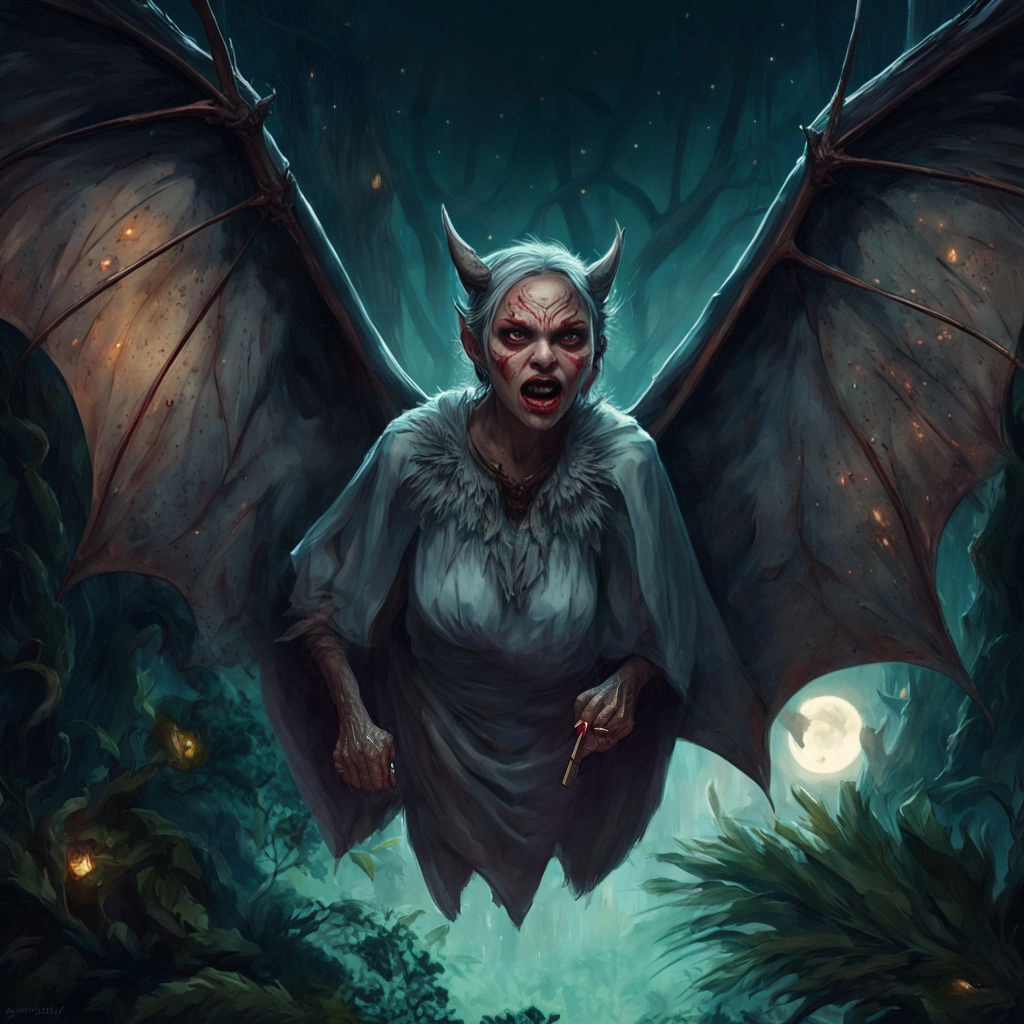The Manananggal: A Terrifying Figure in Philippine Folklore

Distinctive Characteristics
The Manananggal is a legendary creature rooted deeply in Philippine folklore, recognized for its gruesome ability to separate its upper torso from its lower body. This separation is a distinctive trait that sets it apart from other mythical beings, adding a chilling and eerie aspect to its legend. Typically depicted with fangs and bat-like wings, the Manananggal closely resembles the archetype of the vampire, a creature of the night associated with bloodlust and supernatural powers.
Nighttime Predations
The Manananggal is primarily known for its nocturnal activities, preying upon unsuspecting victims under the cover of darkness. Its ability to fly and its penchant for feasting on human flesh—particularly targeting pregnant women enhance its fearsome reputation. These predatory habits make the Manananggal a figure of nightmares in Filipino folklore, embodying deep-seated fears of the unknown and the monstrous lurking in the shadows.
Symbolism and Mythological Significance
The Manananggal represents a potent symbol of the supernatural and the macabre within Philippine mythology. It serves as a reminder of the anxieties that have long haunted the collective imagination of the Filipino people. The creature’s name is derived from the Tagalog word “tanggal,” meaning to split or separate, aptly describing its terrifying ability to divide its body. This unique feature allows the Manananggal to hunt in a terrifyingly unconventional manner, further distinguishing it within the rich tapestry of Filipino folklore.
Daytime Disguise and Transformation Rituals
One of the most unsettling aspects of the Manananggal legend is its ability to appear as a normal individual during the daytime, only revealing its monstrous form at night. This dual nature emphasizes its ability to blend into human society while concealing its true identity as a supernatural being. The ritual of applying oil over its body before separating adds a mystique and ceremonial aspect to its transformation, suggesting a source of power or protection associated with this substance.
Vulnerabilities and Defence
In Filipino folklore, the Manananggal has several weaknesses that add depth to its legend. It is said to have an aversion to garlic, stingray tails, salt, and sunlight. These items are considered crucial for protection against the creature’s deadly attacks. This knowledge of the Manananggal’s vulnerabilities provides a means of defence, making the creature’s mythology not only a source of fear but also a guide for survival.
Passing on the Curse
An intriguing twist in the Manananggal mythology is the belief that it can pass on its powers to others. This transfer of abilities is thought to involve a ritualistic process, adding a layer of complexity and mysticism to the legend. The notion of a living chick inside its body, symbolizing the source of its power, enhances the creature’s gruesome and supernatural nature. This aspect highlights themes of lineage and inheritance, emphasizing the Manananggal’s role in a broader mythological context.
Conclusion
The enduring belief in the Manananggal among many Filipinos underscores the powerful influence of folklore and myth in shaping cultural beliefs and perceptions. Despite being a product of imagination and not scientifically proven, the Manananggal continues to captivate and terrify. These stories serve as a testament to the rich cultural heritage of the Philippines and the enduring fascination with the supernatural and the unknown. The Manananggal, with its unique and terrifying abilities, remains one of the most feared and iconic entities in Philippine mythology, reflecting the deep-seated fears and anxieties of the culture.

